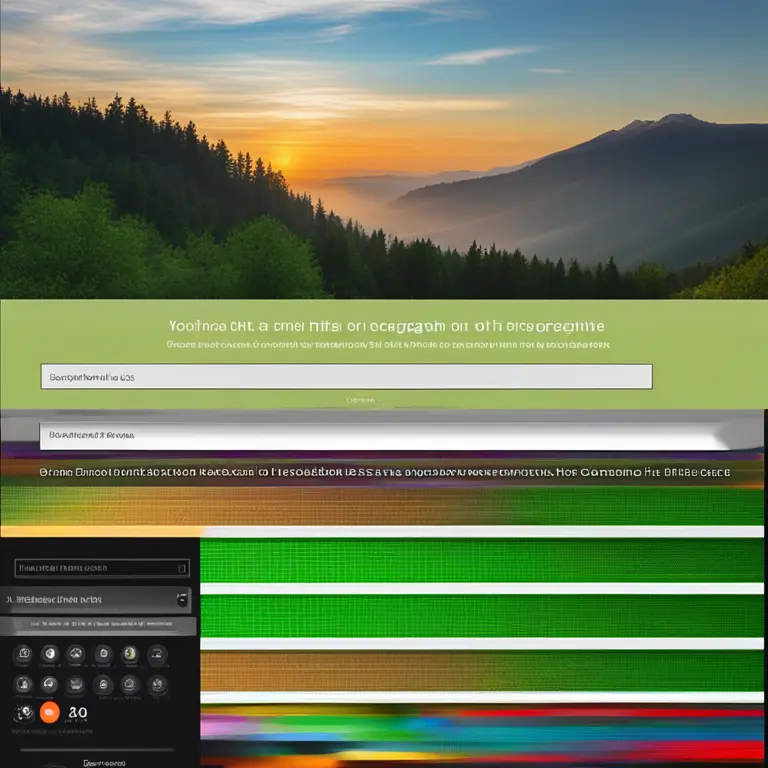
The Rhythms of Life: Delving into Biorhythms Theory
Discover the fascinating world of biorhythms and how our natural cycles influence the physical, emotional, and intellectual facets of our lives.
article by Adrian Wallace
Introduction to Biorhythms
Biorhythms represent a compelling concept that suggests our daily lives are affected by rhythmic biological cycles. The theory posits that from the moment of our birth, we are influenced by natural, cyclical patterns that govern our physical, emotional, and intellectual abilities. Initially introduced in the late 19th century and popularized during the 1970s, the idea of biorhythms has intrigued individuals seeking to enhance personal awareness and well-being. As we step into 2024, the curious amalgamation of ancient wisdom and contemporary understanding continues to fuel interest in this area of study.

A Trilogy of Primary Cycles
The core of biorhythms theory is centered around three main cycles: the 23-day Physical, the 28-day Emotional, and the 33-day Intellectual cycles. Each of these cycles is thought to ebb and flow from high to low phases, impacting our efficiency, feelings, and cognitive functions respectively. Enthusiasts of biorhythms believe that by tracking these cycles, one can anticipate periods of strength or vulnerability and make informed decisions to optimize performance and reduce potential risks.

Biorhythms in the Digital Age
Modern technology has breathed new life into biorhythms. With advancements in wearable tech and smartphone applications dedicated to health and wellness, monitoring one's biorhythms has never been easier. Algorithms that incorporate the latest research on circadian rhythms and personalized data have led to a more nuanced approach to biorhythm analysis, making it a popular tool for those looking to align their life more closely with their natural patterns.

Applying Biorhythms to Everyday Life
The practical applications of biorhythm theory are vast. Some enthusiasts suggest planning activities around your favorable cycles, such as scheduling important meetings or workouts during a high phase in the intellectual or physical cycle. This attention to timing aligns with principles of holistic health that have gained traction in recent years, emphasizing personal synchronization with natural cycles for achieving peak performance and well-being.

Biorhythms and Compatibility
The interplay between individual biorhythms also holds implications for interpersonal relationships and compatibility. By understanding not just your own cycles, but also those of partners or colleagues, it may be possible to foster better communication and collaboration. Shared high phases could indicate prime times for joint endeavors, while recognizing the low phases of others might foster empathy and supportive behaviors during challenging periods.
Criticism and Scientific Scrutiny
Despite its popularity, biorhythms theory has faced skepticism from the scientific community. Critics argue that the lack of empirical evidence and the theory's failure to consistently predict personal effectiveness debunk its validity. Nevertheless, ongoing research into biological cycles, including advancements in chronobiology, suggests there may be more to learn about how rhythmic patterns influence our lives. As science progresses, the dialogue between empirical evidence and biorhythms theory will likely evolve.
The Future of Biorhythms
Looking ahead, the integration of biorhythms theory with emerging fields such as genomics and artificial intelligence holds promise for personalized health insights. As individual data becomes more accessible and our understanding of human biology deepens, the potential to fine-tune our interaction with natural cycles could pave the way for innovative applications that enhance human potential.
Published: 1/30/2024
Modified: 1/30/2024
More predictions
Come back here soon to learn more about yourself and your future


Sync Your Cycles for Harmony With Biorhythms
Delve into the synchronization of personal biorhythms to enhance relationship compatibility and understand its role in fostering deeper connections.


The Rhythms Within Science: A Guide to Biorhythms
Delve into the science of biorhythms to grasp how the physiological cycles influence our lives. This guide breaks down the complexity of biorhythmic patterns.


Biorhythm Compatibility: Sync Your Cycles for Harmony
Discover the intriguing connection between biorhythms and relationship harmony. Learn how syncing your biological cycles can foster deeper compatibility.